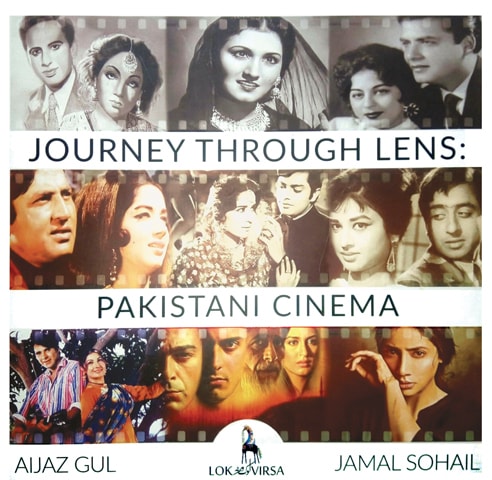 Have you ever shown a child a photo of Waheed Murad, and the child innocently asked you who the fellow was while you tried to impress upon her or him the enormity of Murad’s ‘chocolate hero’ status during the 1970s? Or seen a scratchy print of a film that was once a super hit, but is now virtually unknown? How many of our youngsters would know that Lollywood was once a thriving, tri-lingual industry that produced cinematic masterpieces in Urdu, Punjabi and Bengali? Sadly, not many.
Have you ever shown a child a photo of Waheed Murad, and the child innocently asked you who the fellow was while you tried to impress upon her or him the enormity of Murad’s ‘chocolate hero’ status during the 1970s? Or seen a scratchy print of a film that was once a super hit, but is now virtually unknown? How many of our youngsters would know that Lollywood was once a thriving, tri-lingual industry that produced cinematic masterpieces in Urdu, Punjabi and Bengali? Sadly, not many.
It is, therefore, quite a wonderful development that Lok Virsa: National Institute of Folk and Traditional Heritage — an organisation whose “mandate has been to preserve, document and promote cultural heritage” — recently published Journey Through Lens: Pakistani Cinema. Authored by Aijaz Gul and Jamal Sohail, the book preserves the memory of, and should revive interest in, what were once the glory days of Pakistani cinema.
Gul holds a master’s degree in film studies from the University of Southern California. He is a film reviewer and author of several books on various aspects of film and filmmaking in Pakistan. He was also born into one of the earliest film families of Pakistan. His father, Agha G.A. Gul — along with actor, producer and director Shaukat Hussain Rizvi and director and producer Anwar Kamal Pasha — was one of the key players responsible for establishing the post-1947 film industry. G.A. Gul founded Evernew Studios in Lahore which became one of the main centres of filmmaking where a number of classic Pakistani films were shot. Currently, the studios are headed by one of his other sons, Sajjad.
A visual delight such as any book on cinema should be, Journey Through Lens is filled with magnificent — and oftentimes rare — yesteryear images. There are reproductions of cinema posters and stills from films as well as publicity shots featuring actors who were once superstars and are now long forgotten — Darpan, Nasira, Aasia, Santosh Kumar, Kaveeta and Deeba to name just a few.

The tragedy of Pakistan’s cinema is multi-fold. The industry, which grew organically in Lahore after Partition, provided entertainment across the socioeconomic classes. An evening spent at a cinema house was an affordable activity, unlike the multiplexes of today. Now, not only has the industry declined, but its historical footmark has also diminished. Many films and their prints have gone missing, production houses have tanked and people who once served the industry or wrote for film magazines have died unnoticed. Before Partition, Lahore boasted of six fully functional film studios; few are now operational. Even Evernew Studios, which produced a number of cinematic classics, is now empty and silent.
Academia had the same condescending attitude towards local cinema that society at large did and till recently, there had been little research and intellectual interest in it, therefore Journey Through Lens serves as important documentation that should have taken place decades ago. As such, it is more than just a record; it is the history of the dreams, aspirations and the desires of Pakistani commoners.

Apart from the glamour that appeared on screen, there are sections in the book dealing with the business of cinema, such as finances, distribution, piracy, etc. Information on the classics is balanced with that of new-age films and the authors add documentaries and art films such as Manto to the registry as well.
However, there are several areas that could have been explored further, such as the effect of Partition which saw many bankable stars leave Pakistan’s film industry for India’s. Then, the status of Urdu and Punjabi films in the Bengali film industry and the aftermath of East Pakistan’s secession could also have been discussed. Third, the authors could have analysed how Punjabi cinema was born out of a different ethos and had a differing trajectory — its emergence and rise in popularity deserve a separate focus from its Urdu counterpart. Certain parts of the book seem to be remnants of a research paper and the chapter on Hollywood is not really necessary; it would have been far better had the authors compared Lollywood with Bollywood and shown when and how Pakistan’s films began losing out to the Indian film industry.
In the final analysis, Journey Through Lens is a well-produced, beautiful and informative book that can grace any coffee table and serve as an introduction to Pakistani cinema.
The reviewer is a Lahore-based writer
Journey Through Lens:
Pakistani Cinema
By Aijaz Gul and Jamal Sohail
Lok Virsa: National Institute of Folk
and Traditional Heritage, Islamabad
150pp.
Published in Dawn, Books & Authors, March 25th, 2018
No comments:
Post a Comment